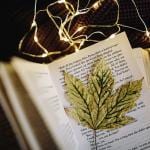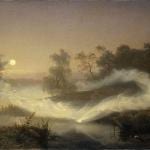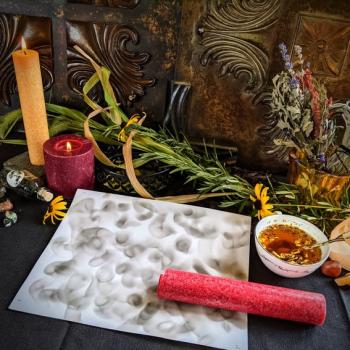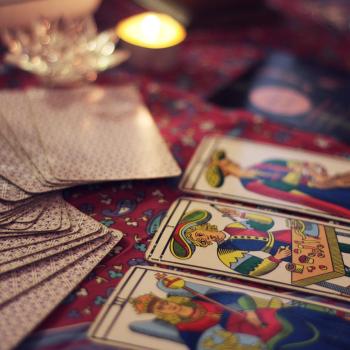Solanaceae: The Witches of the Plant World
There are no plants more specifically associated with Witchcraft and the Devil than those that belong to the family of Nightshade, the Solanaceae. In Latin, Solanaceae means “to soothe,” and they are valued for their pain relieving and sedative properties. This category consists of the infamous plants of the medieval witch’s garden, all of them feared and revered for their healing powers and their ability to loosen the shackles of the physical body thereby freeing the spirit. In legend this was also known as the Garden of Hecate, Queen of Witches, who possessed knowledge of the uses for all the baneful herbs, passing it on to her daughter Circe, and the witch Medea. Both of whom were well known pharmakos, an ancient term for those who worked with plants.
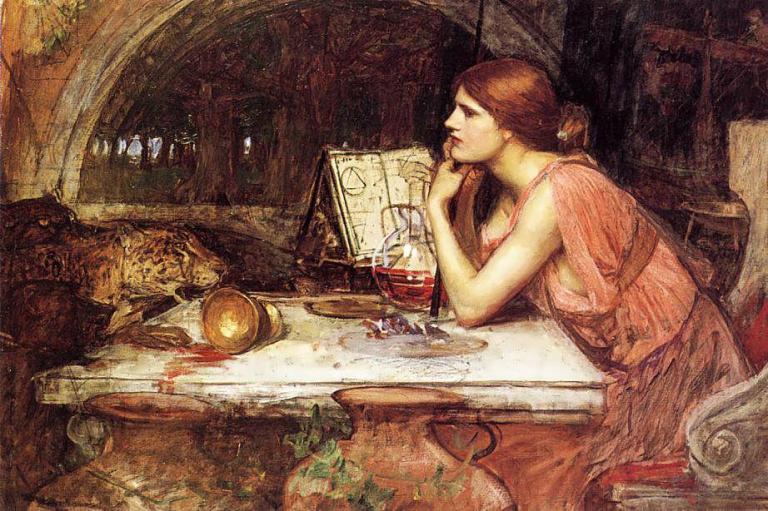
The hexing herbs of the Solanaceae family: Deadly Nightshade, Datura, Mandrake and Henbane; according to pharmacologist Lewis Lewin the plants within this group share similar effects due to their chemistry. They have the property of calling forth “disorders of the brain, including peculiar excitation followed by depression.” (Lewin, p. 190)
“We find these plants associated with incomprehensible acts on the part of the fanatics, raging with the flames of frenzy and fury and persecuting not only witches and sorcerers but mankind as a whole. Garbed in the cowl, the judge’s robe, and the physician’s gown, superstitious folly instituted diabolical proceedings in a trial of the devil and hurled victims into the flames or drowned in blood. Magic ointments or witches’ philtres procured for some reason and applied with or without intention produced effects which the subjects themselves believed in, even stating that they had intercourse with evil spirits, had been on the Brocken and danced at the Sabbat with their lovers, or caused damages to others by witchcraft.” – Lewis Lewin, Phantastica
Within the Solanaceae family there are several plants that go by the name Nightshade. They are all relatives of this larger category with their own distinct attributes. Some of the more common varieties that grow abundantly in Europe and North America, in addition to Deadly Nightshade (Atropa belladonna) are: Black Nightshade (Solanum nigrum) and Woody Nightshade (Solanum dulcamara). These plants are also related to vegetables like pepper, tomato and potato which display similar characteristics, most evident in the shape of their flowers. The flowers have five petals and sepals. Some flowers are bell or trumpet shaped, while others resemble stars. The berries range in color depending on the variety of the plant. The berries of Black Nightshade and
Deadly Nightshade are black or deep purple. The berries of Bittersweet Nightshade start out green and like a ripening tomato go from yellow, to orange and finally red.
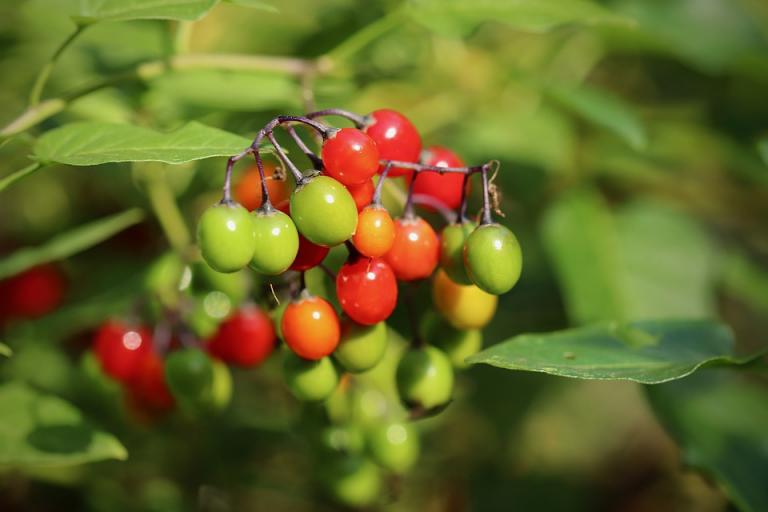
In addition to the common varieties, there are those that are rarer comprising the 3,000 different species of this diverse family. Other plants like Hemlock and Wolfsbane are also known for their supernatural associations and are connected to witches and their patron spirits, capable of enhancing magical acts in their own unique ways. Many of these plants gained their arcane reputations through their poisonous nature which connected them to infernal deities, and in later medieval lore the practice of witchcraft. In antiquity, sorcery was a common practice sought out by anyone in need of Otherworldly assistance, however, there was a division between the practice of sorcery or black magic. This type of magic contrasted with the socially acceptable propitiation of the gods.
Astrologically, the Nightshades are under the dominion of Saturn, known as the Greater Malefic, ruler of all poisonous plants and creatures. Many plants also have secondary planetary and elemental correspondences that further influence how they interact with our magic. For example, the Nightshades are Saturnian, although they also have connections to Venus and Mercury. There are other poisonous plants that are connected by lore to Jupiter, Uranus and Neptune alternately and are utilized for their visionary, consciousness expanding capabilities.
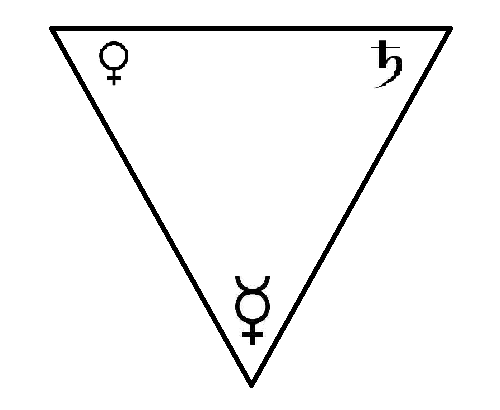
Many more practitioners are opening up to the idea of exploring these plants as spiritual allies in magical practice despite their reputation for being too dangerous to work with. However, as we integrate these chthonic and Saturnian energies that are a prominent part of traditional craft practices we learn to work with our own shadow as well as the darker forces of the natural world. Much importance and inquiry has been placed on specific dosage, and how to prepare formulas for entheogenic use through ingestion. Although there is a growing body of information based on experimental practices from modern practitioners, and some obscure medical references to the use of these plants; this is where one is largely left to walk the Path of Poisons for themselves.
While there are guidelines and more information available with an increasing number of practitioners sharing their entheogenic experiences. Personal exploration and learning are key.
There are several ways to work with these powerful spirits, just like those plants used for healing. By using flower essences, ritual incense, oils, fetishes and charms; one can come to understand safer esoteric ways of working with baneful herbs. The hallucinogenic and trance inducing properties that they have are a small facet of the rich spiritual properties that can come of a working partnership with these botanical allies.
The variations in alkalinity and the many factors that contribute to their concentration are part of the unpredictability that is characteristic of teaching plants of a darker nature. These are the tricksters and shapeshifters of the plant world, which can act as both poison and panacea. They can teach us about boundaries and limitations that we would otherwise not approach. Their visions are often terrifying their amnesiac qualities can sneak up on a practitioner who does not realize they are in a delirium until its effects begin to subside.
The tropane alkaloids act on the brain in unique ways. They are capable of activating the pineal gland, which corresponds to our third eye. The pineal gland senses changes between light and darkness even though it is deep inside the brain. By stimulating melatonin, a dream-like waking state is induced. It is a state akin to lucid dreaming which is further enhanced by darkness and ecstatic techniques.
If you are interested in learning more about these plants; their history, chemistry and magical applications follow me on Facebook and Instagram @poisonersapothecary
And my collection of herbal amulets, custom ritual jewelry, nightshade oils and classes HERE.

References:
Lewin, Lewis. Phantastica: A Classical Survey on the Use and Abuse of Mind Altering Plants. Inner Traditions Bear and Company. 1998.

